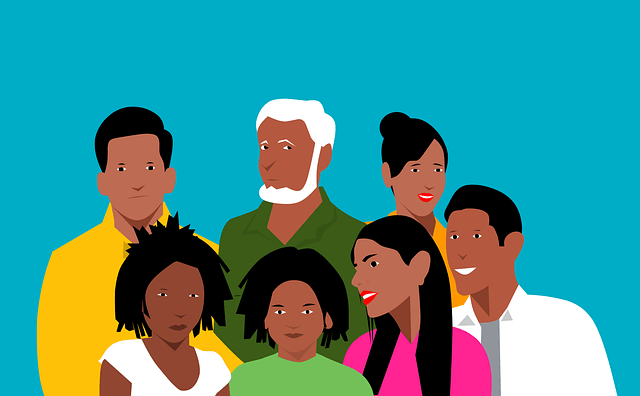education
المقررات الدراسية موسومة بـ "education"
Harvard Referencing
In this course, provides a beginner's guide to referencing.
Introduction
If you haven't referenced before or maybe it's been a while, this course on referencing will include something for everyone; no matter the level. It provides a beginner's guide to referencing, as well as in-depth examples of using the Harvard referencing style for a variety of information sources. The lesson also includes tips and recommendations to help you do it the easy way.
You will learn
- Explain the purpose of referencing in academic work
- Apply the Harvard referencing style to a variety of contexts
- Utilise tools and techniques to improve your accuracy with referencing
Equality and Diversity
Learn about equality and diversity in health and care. This course is ideal for intermediate learners.
Introduction
The health and social care sector recognises the need to treat everyone equally, and therefore equality, diversity and rights affect all those working in the sector as well as those who use health and social care services.It is important that these terms, equality, diversity and rights, are at the very core of everything that is done.
Equality, diversity and rights ensure that everyone is treated the same, regardless of the following:· Gender
· Sexuality
· Ethnicity
· Language
· Race
· Age
· Sexual orientation
· Background
· Beliefs
· Disability
· Education
· Skin colour
Equality, diversity and rights will have different effects on your career and an impact on the people you care for as they mean different things. For example:
Equality
Equality looks at how everyone should be treated in the same way. This means that every individual should have the same rights, status or opportunities.
Laws
Laws have been put in place to ensure that this happens and organisations have to write and adhere to equality policies (guidelines that tell an organisation what to do in a particular situation) which outlines what they must do and how they should do this, so that everyone is treated equally.
You will learn
- Introduction to Equality, Diversity and Rights in Health & Social Care
- Groups, Stereotyping and Labelling
- Promoting Equality & Diversity rights in a Health & Social care setting
- Protected Characteristics
- Equality - Rights in the Social Care setting
Writing for an argument
Learn about some common reasons for writing an argument including for and against. This course is ideal for intermediate learners.
Introduction
Writing an argument is a formal way of making a case for and/or against a certain thing or topic, and there are many reasons why someone might do this.In college you might be asked to write an essay where you argue for and against a certain idea,
for example:
''Mobile phones should be banned from classrooms. Discuss.''
However, outside of college, there are lots of reasons for this style of writing as well. You might want to voice your opinions about things happening in your area, for example plans being made by the council, or new political schemes that are being introduced.
You will learn
- Some common reasons for writing an argument
- How to write in favour of something
- How to write against something
- How to piece together a fair argument
Strategies for Reading
Learn about strategies for reading, what is meant by skimming and scanning, how to read something in detail and how to find what you need from a text. This course is ideal for intermediate learners.
Introduction
In this course we will think about different reading styles that can be used, and which style might be best for finding what you need in a text.If we are flicking through a newspaper, we might only scan the occasional article to see if it looks interesting. If we are reading a book, we are likely to read it in a more detailed way, as we will be paying close attention to the characters and what they are doing.
Reading strategies are basically the different ways you can read a text.
A text could be anything from a newspaper article to a novel, or a long story. When we are reading different things we will probably read at different levels – meaning we will concentrate more or less – depending on the type of text we are reading.
You will learn
· Know what is meant by skimming· Know what is meant by scanning
· Understand how to read something in detail
· Know how to find what you need from a text
Spelling – vowels and consonants
Learn about spelling, specifically vowels and consonants, what they are, how long and short vowels work and the difference between a hard and soft consonant. This course is ideal for intermediate learners.
Introduction
Vowels and consonants are the names that can be given to the letters in the English alphabet. In the whole alphabet there are actually only five vowels and they are:
A – E – I – O – U
This means that everything that is not a vowel – i.e. it is not one of those letters listed above – is a consonant.
Knowing how vowels and consonants work together is an important part of spelling, as both types of letter can be used to make different sounds and words, and they can change the meaning of a word entirely as well.
You will learn
By the end of this session, you will:· Know what a vowel is
· Know what a consonant is
· Understand how long and short vowels work
· Know the difference between hard and soft consonants
Sentences – statement, question and command
Introduction
A statement sentence is a sentence that tells the reader something – or rather, gives the reader a piece of information – in a clear and direct manner.Statement sentences are sometimes called assertive sentences or declarative sentences.
These are the most common types of sentences that we use on a day-to-day basis because our conversations are mostly based around the idea of exchanging information with other people – which is exactly what statement sentences are for.
The main aim of a statement sentence is always to tell someone a fact or an idea about a certain topic.
They can vary in their length but, like all sentences, they have to end with some kind of punctuation mark (this is often a full stop but it might also be an exclamation mark, if you really want to shout about your sentence).
The key to spotting a statement sentence is to look at the topic of the sentence itself – do not look at the length or the structure, as these will not always help you to spot a statement.
If the sentence is stating something – a fact, a thought, or an opinion – then it is a statement sentence. If, however, the sentence is asking a question or making an order, then it is a different type of sentence entirely.
You will learn
- Understand what a statement sentence is
- Know how and when to use a statement sentence
- Understand what a question sentence is
- Know how to write a full and proper question
- Understand what a command sentence is
- Know how and when to use a command sentence
Skills of Punctuation
Learn about punctuation, how to use a full stop, question marks, exclamation marks and the different ways of using commas and apostrophes. This course is ideal for intermediate learners.
Introduction
In this course we are going to look at some of the most common types of punctuation, and think about how to use this punctuation in everyday writing.Punctuation are marks and symbols that we use to separate out our words and our sentences. Every sentence has some kind of punctuation symbol included in it – like this one, for example, which has a dash, commas, and will have a full stop.
The reason that we use punctuation is that it helps to make our writing – and the things we are trying to say through our writing – a little easier to read.
Using punctuation can be the difference between someone understanding your thoughts and ideas, and someone not understanding them at all! So it is always worth knowing which punctuation mark you should be using and where you should be using it.
You will learn
· Know how to use a full stop· Know how to use question marks
· Know how to use exclamation marks
· Understand the different ways of using commas
· Understand the different ways of using apostrophes
Planning Your Writing
Learn about planning your writing, why it is important, how to write a good and useful story plan and how to use these planning tips for other types of writing. This course is ideal for intermediate learners.
Introduction
In this course we will think about why it is useful to plan your writing before you start, and we will also think about some of the questions we might want to answer as part of this planning.
Generally speaking, when you plan your writing you will think long and hard about what you want to say, how you want to say it, and the order you are going to say these things in.Planning will help you to work out the most important points that you want to make in your writing, and it will help you to plan how you are going to construct or write these points too.
Even though there will be times when you might want to just sit down and write, a good plan will give you guidance to make sure that your writing is as clear and as well put together as possible, to make for a better experience for your reader.
You will learn
- Understand why planning your writing is improtant
- How how to write a good and useful story plan
- Know how to use these planning tips for other types of writing
Homonyms
Learn about homonyms, what homonyms and homophones are, the difference between them and the most common homonyms in English. This course is ideal for intermediate learners.
Introduction
In this course we are going to look at the meaning of the word homonym and take a closer look at some words that fall into this language family.
In the English language homonyms are a family of words that sound the same or similar to each other, but they have completely different meanings.Homonyms is actually a big name that covers a few other types of words as well, such as:
· Homophones
· Homographs
· Heteronyms
Homophones are very common in English and there are lot of words – many of which we use on a daily basis – that fall into the homophone family.
Homophones are a type of homonym and the term is used to describe words that sound the same, or sound very similar to each other, but they have different meanings and different spellings.
If we say where (W H E R E) and wear (W E A R) aloud it is easy to spot that these words sound exactly the same as each other – even though they have different spellings and different meanings.
You will learn
- Understand what homonyms are
- Understand what homophones are
- Know the difference between homonyms and homophes
- Know several of the most common homonyms in English
Different Types of Texts 2
Learn about different types of text (part 2), what a leaflet is, what it will contain, where you are likely to find them and what a manual is and what it will contain. This course is ideal for intermediate learners.
Introduction
In this course we are going to look at different types of leaflets and manuals that you are likely to encounter on a week by week basis, including what to expect from these different texts.A leaflet is a piece of paper that has been folded to look like a small brochure, or pamphlet. Leaflets are often quite compact meaning they do not give a writer a lot of space to work with.
Due to their small size there is not really much space for written text, so the text that is included has to be well-written and, depending on the type of leaflet you are reading, the writing might even be quite persuasive as well.
Whatever the reason for a leaflet being made, their main job is always to communicate information to a reader – whether that is persuasive information about a product, or promotional information about an upcoming event or occasion.
You will learn
- Know what a leaflet is
- Understand what a leaflet will contain
- Know where you are likely to find leaflets
- Know what a manual is
- Understand what a manual will contain
Different Types of Texts 1
Introduction
On a day to day basis there are many different types of text that you are likely to come into contact with – whether you are reading a newspaper, a book, or even just an advertisement.The main types of text that we will discuss in this session are:
· Non-fiction
· Fiction
· Poems
· Plays
Every different text has its own style and its own set of rules that writers have to follow, and we will think about these in the following sections as well.
Non-fiction texts are written about things that are true, and they are usually based on or around facts – this means that details in non-fiction texts are often things that can be proved or supported by other texts.
Even though all non-fiction texts have to include facts, these texts can still come in different shapes, sizes, and styles, and they can still be quite creative as well.
You will learn
- Know what a non-fiction text is
- Know what a fiction text is
- know what poems and plays are
- Undersand the main characters of each types of text
Alliteration and Onomatopoeia
Learn about alliteration and onomatopoeia, what they are, how and when to use alliteration, examples of onomatopoeia and how to use it in writing. This course is ideal for intermediate learners.
Introduction
In this course we are going to look at what these words actually mean and how we can use them to improve our written work.Alliteration is when a small selection of words start with the same sound, for example:
Charlie checked on his pet chickens.
The repeated ‘ch’ sound in this sentence is what creates the alliteration. It is worth remembering though that alliteration is all about sound and not necessarily about the letters making the sound, so words can be alliterative even if they start with a different letter – as long as the sound is the same! For example:
Claire kicked at the carpet.
Alliteration is used in creative writing – like poems and stories – for several reasons. It is often used in poems to draw the reader’s eye to a certain detail – using the words to highlight a particular line or sentence.It is used in a similar way in stories, as alliterative sentences and phrases are likely to stand out more when people are reading.
You will learn
- Know what alliteration is
- Understand how and when to use alliteration
- Know what onomatopoeia is
- Know some common examples of onomatopoeia
- Understand how to use onomatopoeia in writing
Grammar Wars
Introduction
Common English Grammar Mistakes- 1) Present and Past Tense. ...
- 2) How To Avoid the Overuse of Adverbs. ...
- 3) Your/You're. ...
- 4) Misplacing Apostrophes. ...
- 5) There / Their /They're. ...
- 6) Confusing similar spellings and words. ...
- 7) Using incomplete comparisons. ...
- 8) Getting adjectives and adverbs confused
You will learn
- Common grammatical mistakes
- When to use ‘me’ or ‘I’
- When to use ‘were’ or ‘was
How Public Services Meet the Needs of Society
Learn more about the role of the public sector in areas such as education, criminal justice and leisure. This course is ideal for intermediate learners.
Introduction
Education is another part of Public Services. Every citizen in the UK has the right to education. Education allows us to learn new skills and values through learning subjects such as; Maths, English, Science, Art, Geography and History.
By getting an education it allows us to get qualifications and meet the needs for specific jobs within our society.
You will learn
- Education
- Health
- Criminal justice
- Environment services
- Leisure
- Social welfare
Human Rights and Public Services
Learn about the Human Rights Act 1998 and other legislation to protect your rights as a citizen. This course is ideal for intermediate learners.
Introduction
As normal citizens in the UK we are expected to follow the laws of the country and be good citizens. Members of the public services also have to obey the laws that everyone else does, but they have additional laws to follow because they have additional powers that normal citizens do not have.Every statutory public service in the UK has its own legislation, to describe not only how the service should function but also its limitations and restrictions. Members of the public services should be role models and examples to others. They need to have authority and that can only be achieved if they are good citizens and obey the law themselves.
Human rights are things to which individuals in society are entitled. These rights are laid down in law, so if these rights are violated, then a UK citizen can go to court to seek justice. The principal law in the UK is the Human Rights Act 1998.
Human rights can be split into two sections:
1. Protection
2. Rights or entitlements
You will learn
- Human Rights Act 1998
- Other legislation (law) that protect your rights as a UK citizen
The Impact of Change in Society
Learn more about the different changes in society and how these have impacted public services. This course is ideal for intermediate learners.
Introduction
Over time society has changed dramatically. Think back 50, 60, 70 or 100 years – how do you think society would have looked?Here are some points of changes :
Medicine has developed over time. Illnesses that had no cure are now curable and medical facilities have improved.
Technology now enables you to contact people all around the world.
Society has become more diverse due to migration and better transport.
Demographics relate to the structure of populations. This means that when you think about the demographic of somewhere, you are looking at how their society is made up in terms of the people who live in it. There have been many changes in society and there are positive and negative aspects of demographic change.
Here are some examples of demographic changes:
• Growth of an ageing population
• Patterns of health and illness
• Immigration
• Social inequality
You will learn
- Different changes that have happened in society
- How these changes in society have impacted on the Public Services
- Changes in demographics
- Ageing population
- Immigration changes
Equal Opportunities
Learn about the cost of implementing or not implementing equal opportunities measures. This course is ideal for intermediate learners.
Introduction
Creating and developing equal opportunities creates many benefits for society, public services and businesses. However, with the application of the Equality Act 2010 and so that equal opportunities can be achieved, it comes with a cost. Although this should far outweigh the cost involved with not adhering to the act.The cost for businesses: Possible costs of adhering to the Equality Act 2010 and equal opportunities for businesses employing a wide diversity of staff:
Costs to employers includes:
• Simplification of application process
• Learning and understanding of different cultures (clothing, special days, religious needs)
• Providing areas for rest or religious activities
• Food or methods of preparation (If canteen area is provided)
You will learn
- The cost of implementing equal opportunities
- The cost of not implementing equal opportunities
- Equal opportunity measures
Public Services and Legislation
Learn about the legislation surrounding the public sector and equality duty. This course is ideal for intermediate learners.
Introduction
All public services have to comply with the Equality Act 2010 and this states that they must also comply with the public sector equality duty. The equality duty ensures that public services think about how they deliver their services and how this will impact on those who are disadvantaged or within the protected characteristics group.
As with discrimination exceptions, there are situations where public services do not need to comply with these duties. These include the following areas:
Judicial Events – The courts do not need to think about the equality duty when making decisions or when and how they conduct the proceedings.
Age in education or children’s home – Schools do not need to think about how to develop good relationships between pupils of different ages. However they need to consider this between pupils of different religions.
Immigration - When involved in immigration proceedings, public services would not need to think about the advance equality of opportunity (treating one group more favourably than another because of their disadvantage) to those in the following protected groups:
- · Age
- · Religion
- · Race
You will learn
- Public sector equality duty exceptions
- Types of legislation under the equality duty
- Policy and decision making processes
Aspects of Government Policy
Introduction
The Government is responsible for deciding how the country is run and for managing things on a day to day basis.They set taxes, choose what to spend public money on, and decide how best to deliver public services, such as:
· The National Health Service (NHS)
· The police and armed forces etc.
· Welfare benefits, like the state pension
· The UK’s energy supply
Couple of years ago the Government made a dramatic change to education, that saw the participation age rise from 16 to 18. Before this you were able to leave school at the age of 16.
However, this new policy means that you can leave school at 16, but you must do one of the following until you are 18year old:
· Stay in full-time education, for example, at a college or sixth form
· Start an apprenticeship or traineeship
· Spend 20 hours, or more, a week working or volunteering, while in part-time education or training
You will learn
- The government
- Education
- Minimum wage
- Social welfare
Individual Rights Dignity & NHS
Learn more about dignity and rights when using public services. This course is ideal for intermediate learners.
Introduction
In life we need to use the Public Services many times for different reasons. It is important that when we need these services that they are high quality services.For example, if you were to call the Paramedics in an emergency and they did not turn up until the next day this could be very dangerous and would be an example of poor quality service.
Another example could be if you called the fire service and they did not turn up with the correct equipment with them, then lives could be in danger.
You will learn
- Public services users rights
- Your right to consent to treatment when using the NHS
- Why it is important to have your dignity maintained when using public services





















